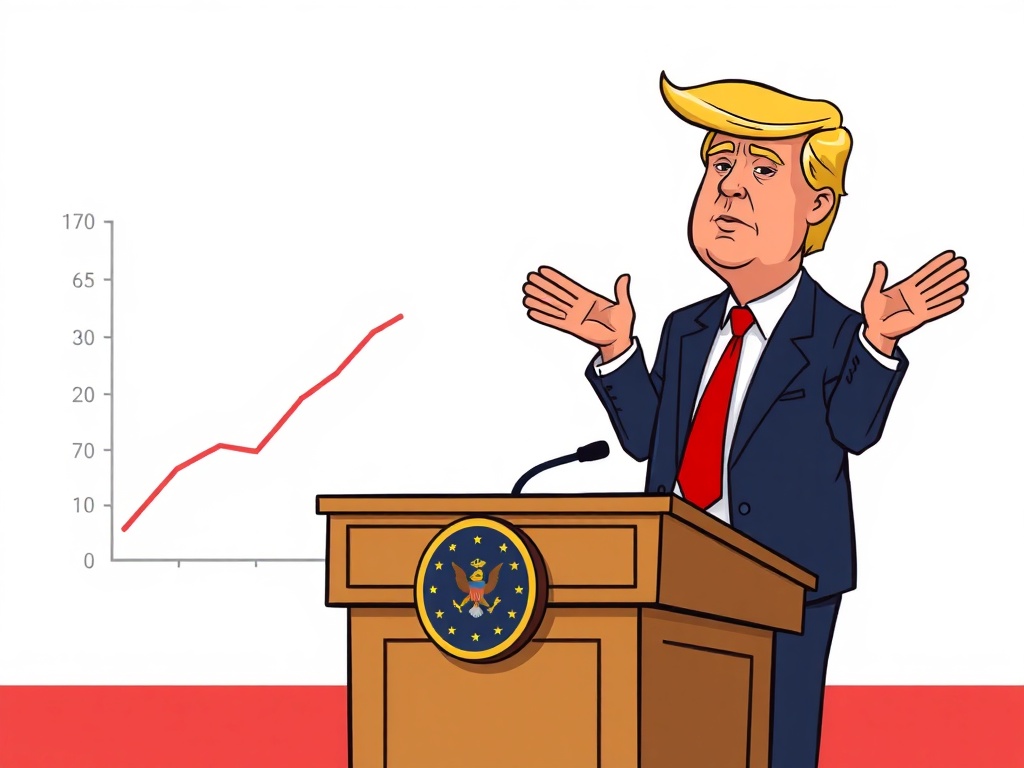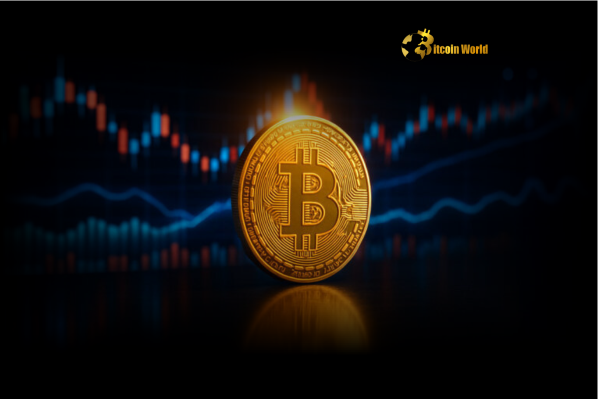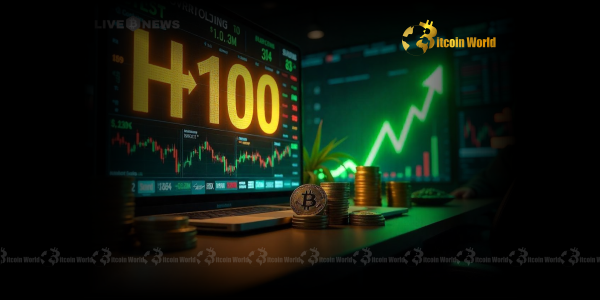BitcoinWorld

Inflation Outlook: Trump’s Remarkable Claim of ‘Virtually Non-Existent’ Economic Inflation
U.S. President Donald Trump recently made headlines with a truly remarkable assertion regarding the nation’s inflation outlook. According to a report by the Walter Bloomberg economic news account on X, Trump stated that inflation has fallen to a ‘perfect level,’ effectively claiming there’s ‘virtually no inflation’ at all. This declaration presents a unique perspective on the current economic climate, especially as global markets continue to grapple with various price pressures.
What Do Trump’s Inflation Views Mean for the Economy?
When a prominent figure like Donald Trump shares his Trump’s inflation views, it naturally sparks widespread discussion among economists, investors, and the general public. Inflation, at its core, refers to the rate at which the general level of prices for goods and services is rising, which consequently means purchasing power is falling.
Central banks worldwide typically aim for a low, stable rate of inflation, often around 2%, considering it healthy for sustainable economic growth. Trump’s assertion of ‘virtually non-existent’ inflation stands in contrast to recent reports that, while showing inflation cooling from its peaks, still indicate prices are above pre-pandemic levels. This perspective suggests a belief in a robust economy that has successfully navigated previous price surges.
Understanding the Current State of US Inflation
To fully grasp the context of Trump’s comments, it is important to examine the actual state of US inflation. Various economic indicators, such as the Consumer Price Index (CPI) and the Personal Consumption Expenditures (PCE) price index, help us track price changes.
While both metrics have shown a significant deceleration from their mid-2022 peaks, they haven’t yet consistently reached the Federal Reserve’s target of 2%. For instance, recent CPI reports indicate a slowdown, but core inflation, which excludes volatile food and energy prices, has proven stickier. This suggests that while headline inflation may be easing, underlying price pressures could persist.
- Headline Inflation: This measure, which includes all goods and services, has seen a notable moderation.
- Core Inflation: Excluding volatile items, this measure often gives a clearer picture of underlying price trends and has been more stubborn.
- Federal Reserve’s Stance: Policymakers are closely monitoring all data to determine future monetary policy decisions.
How Does This Impact Economic Stability?
The perception of inflation, whether high or ‘virtually non-existent,’ directly influences economic stability. If consumers and businesses believe prices are under control, it can foster confidence, encourage spending, and support investment. Conversely, high or unpredictable inflation can erode purchasing power and create widespread uncertainty.
A key challenge for policymakers is managing expectations. If the public widely believes inflation is gone, it could lead to different spending and investment behaviors than if they anticipate ongoing price increases. This dynamic plays a crucial role in shaping future economic trends and overall market sentiment.
Can Cryptocurrency Serve as an Inflation Hedge?
In periods of economic uncertainty or perceived inflation, many investors actively seek assets that can act as a cryptocurrency inflation hedge. Historically, assets like gold have been considered traditional safe havens. However, in recent years, Bitcoin and other cryptocurrencies have gained significant attention for their potential to store value independently of traditional fiat currencies.
The argument for crypto as an inflation hedge often centers on its decentralized nature and limited supply, particularly for assets like Bitcoin. Proponents suggest that unlike fiat currencies, which can be printed in unlimited quantities, Bitcoin’s scarcity could potentially protect purchasing power during inflationary periods. However, it is important to remember that cryptocurrencies are highly volatile. Their prices can fluctuate dramatically, making them a risky hedge for some. Their effectiveness as an inflation hedge is still a subject of ongoing debate and depends heavily on broader market conditions and investor sentiment.
Navigating the Nuances of the Inflation Outlook
Donald Trump’s recent comments certainly add a unique dimension to the ongoing discussion about the inflation outlook. While official economic data suggests inflation is cooling but not entirely gone, his perspective highlights the varied interpretations of current financial health.
For investors and the public, understanding these different viewpoints is crucial. Whether inflation is ‘virtually non-existent’ or simply moderating, staying informed about economic indicators and their potential impact on both traditional markets and emerging assets like cryptocurrency remains paramount. The economic landscape is complex, and diverse perspectives contribute to a fuller understanding.
Frequently Asked Questions (FAQs)
Q1: What did Donald Trump say about inflation?
Donald Trump stated that inflation has fallen to a ‘perfect level’ and that there is ‘virtually no inflation,’ according to a report by Walter Bloomberg economic news.
Q2: How is inflation typically measured?
Inflation is commonly measured using indices like the Consumer Price Index (CPI) and the Personal Consumption Expenditures (PCE) price index, which track changes in the prices of goods and services over time.
Q3: Is core inflation different from headline inflation?
Yes, headline inflation includes all goods and services, while core inflation excludes volatile items like food and energy prices, providing a clearer picture of underlying price trends.
Q4: Can cryptocurrency act as an inflation hedge?
Some argue that cryptocurrencies like Bitcoin can serve as an inflation hedge due to their decentralized nature and limited supply. However, their high volatility means their effectiveness as a hedge is still debated and depends on market conditions.
Q5: What is the Federal Reserve’s inflation target?
The Federal Reserve typically aims for a stable, long-term inflation rate of around 2%, which it considers healthy for economic growth and stability.
Did you find this analysis insightful? Share your thoughts on Trump’s inflation comments and the role of cryptocurrency in today’s economy! Spread the word on social media and join the conversation.
To learn more about the latest crypto market trends, explore our article on key developments shaping Bitcoin price action.
This post Inflation Outlook: Trump’s Remarkable Claim of ‘Virtually Non-Existent’ Economic Inflation first appeared on BitcoinWorld and is written by Editorial Team





